46.70457, -92.534821
Study of ecological and stand dynamics changes after a single thinning from below
44.965049, -89.64189
Stop the below-ground spread of an active oak wilt pocket in order to maintain oaks into the future.
47.565127, -94.076095
Test silvicultural systems that adapt red pine forests to anticipated changes in climate and disturbance regime.
43.691501, -91.899567
Establish a mixed hardwood forest with strong oak and black walnut components on a former agricultural field.
46.86377, -94.71895
Test the hypothesis that retaining a live seed source on a FDc23 jack pine harvest site will result in adequate natural jack pine regeneration.
46.047033, -92.432486
Increase recruitment success of oak seedlings/saplings into larger size classes to ensure the species is a co-dominant/dominant species in the next mature stand.
47.362925, -91.043965
Increase stand resilience by increasing species diversity (promoting cool climate-dependent tree species) and structural complexity through brush control site preparation and artificial regeneration (conifer planting).
47.103709, -91.572081
Enhance current and future species diversity and structural complexity by ensuring successful tree recruitment into sapling/small tree size classes currently absent from the stand.
43.846417, -92.18994
Use a prescribed burn followed by direct seeding to return a reed canary grass area to bottomland hardwood.
44.869536, -88.904822
To begin conversion of an even-aged sawtimber sized northern hardwood stand to an uneven-aged northern hardwood stand by reducing the basal area to 70-90 ft2/acre (16-21 m2/ha) to promote another age class.
43.634511, -91.499047
Convert agricultural land to new Central Hardwoods stand.
43.842362, -92.18504
To return areas with dense reed canary grass to bottomland hardwood forests.
46.696065, -92.537739
Demonstrate the results of thinning from below (light), selection (from the top), and thinning from above (heavy crown thinning).
47.025792, -91.677812
To determine long-term trends in forest vegetation by installing fencing treatments.
48.341648, -93.705259
This project's objective was to provide a readily accessible demonstration site to observe the operational challenges of managing dwarf mistletoe infested black spruce stands.
47.547518, -93.374005
Introduce conifer species into a stand previously composed of almost pure aspen.
47.379596, -94.61931
Increase resilience of black ash stands threatened by emerald ash borer (EAB) through regeneration harvests aimed at increasing representation of non-ash species.
46.703, -92.525
To lower stand density in a spatially heterogeneous fashion, reduce fuel-loading in a mature stand by disconnecting foliage between the canopy and sub-canopy, and increase aesthetic appeal of a multi-aged red pine stand.
48.027063, -94.15836
Increase white/red pine, decrease aspen
47.216049, -93.648893
Establish a de novo stand of hybrid aspen using ‘dense pack’ plantings and precommercial shearing to promote suckering.
47.258759, -93.16978
Regenerate spruce and aspen in mixed stand for future commercial harvests
44.212176, -91.921667
Keep the site forested and increase resilience by improving diversity and removing invasive species.
47.243333, -92.01083
To successfully regenerate the stand to a Black spruce and Tamarack type through natural seeding, using a two entry strip cut harvesting method.
44.551622, -92.713903
1974 harvest: Release young poletimber to accelerate growth of desired species. 2009 harvest: Maintain and enhance a diverse, multi-aged northern hardwoods stand while salvaging blowdown timber.
46.841087, -92.719485
Precommercial free thinning at age 20 to reduce aspen dominance and favor northern hardwood species.
44.869536, -88.904822
Better understand the relationship between Carex pennsylvanica and Carex pedunculata, deer browse, and regeneration of quality northern hardwood species in a way to create future management options to promote seedling success.
46.699556, -92.524694
Promote and maintain fire-dependent forested community and conduct mid-rotation site preparation through ecocultural prescribed fire.
43.739268, -91.207642
Salvage storm damaged trees and ensure that site is adequately regenerated to bottomland hardwoods rather than converting to reed canary grass.
46.43308, -91.518213
Permanent vegetation plots were established within 5 stands in Zone 1 of the Barnes Barrens Management Area (BBMA) as a way to monitor the effects of different herbicide treatments to reduce competition with jack pine while maintaining quality habitat for
47.240113, -92.13053
Convert a poor quality aspen / paper birch stand to pine.
47.39792, -95.55734
Natural regeneration of jack pine while maintaining a robust native plant community
45.35, -88.433333
Cost effective and operationally feasible control of oak wilt in a forested setting.
44.860534, -89.724711
Stop the spread of an active oak wilt pocket in order to maintain oaks into the future
44.195694, -89.466389
The objective for this treatment is an even-aged, overstory removal of red pine in order to release white pine advance regeneration.
46.680039, -92.51371
To examine the effects of tree density or spacing for crop tree management of birch stands.
47.23524, -92.13472
To convert a poorly stocked and poor quality birch-dominated stand to pine using aerial seeding.
46.2859, -93.127761
47.586677, -95.064547
Determine if a selected red pine plantation is declining in growth after a thinning.
46.702402, -92.528351
To test an experimental red pine natural regeneration system that balances economic and ecological factors.
43.782186, -91.30199
The silvicultural objective is to establish native tree cover and determine more effective methods of controlling reed canary grass.
46.084299, -92.446905
To encourage aspen regeneration through rollerchopping in a young aspen stand heavily impacted by blowdown.
46.956389, -93.715833
To increase the quality and stocking of northern red oak and saplings at the site through the protection of bud caps to reduce browsing, and limit competitor species such as, aspen, ironwood and beaked hazelnut.
46.614308, -93.486841
Sample reserve patches retained for legacy purposes during aspen harvests (clearcut with aggregated retention) to evaluate "old forest" attributes.
44.665304, -92.731634
Regenerate mature lowland hardwood stands to young stands of similar composition.
43.77772, -91.17246
Establish a fully stocked stand of naturally and artificially occurring floodplain forest tree species on a former hayfield now dominated by invasive reed canary grass through site preparation and direct tree seeding.
46.116551, -91.3568
To investigate relative performance of species with potential to replace black ash threatened by emerald ash borer.
46.85694, -95.35833
Uneven aged management in a 115 year old pine stand.
47.186192, -92.049008
Regenerate red and white pine through natural seeding
45.477079, -90.675107
To regenerate black ash and promote non-ash species.
46.691877, -92.526878
This 1984 treatment was designed to demonstrate two types of reserve management: 1) mechanical restoration of open understory treatment, as a demonstration of historical stand structure maintained by surface fire regime, and 2) no treatment.
48.219279, -94.022102
Maintain white spruce component to mixed species stand dominated by aspen.
46.7, -92.5
Remove the standing dead and Eastern Larch Beetle infested tamarack trees and to thin denser areas of living tamarack trees to make them more resilient to future attacks.
43.201444, -90.66377
Transition from a two aged oak dominated stand to multi-aged northern hardwood stand
42.50997, -89.27571
The objective for management is to preserve the bottomland hardwood stand by augmenting advance regeneration prior to overstory mortality due to emerald ash borer (EAB).
46.442952, -92.437795
Develop a more structurally diverse red pine stand while increasing opportunities for natural regeneration while maintaining an economically feasible timber harvest
43.907925, -92.340917
Establish a mixed hardwood forest with strong walnut and oak components on a former agricultural field.
47.798524, -90.813093
Maintain and enhance pine patch by promoting spatial and vertical structure common to older fire-dependent pine forests. Decrease the potential for crown fire and reintroduce the role of disturbance.
47.306, -94.735
Even aged management of Red Pine. This treatment tested the effect on seedling growth of adding N to Velpar applied for competition control.
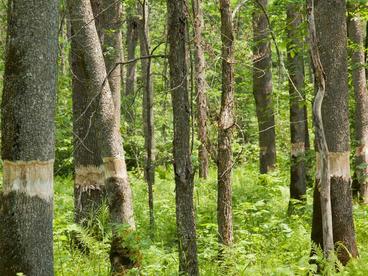
Evaluating the ecological impacts of EAB and climate change on black ash forests (Chippewa NF)
Increase resilience of black ash stands threatened by emerald ash borer (EAB) through regeneration harvests aimed at increasing representation of non-ash species.
Cover type: Ash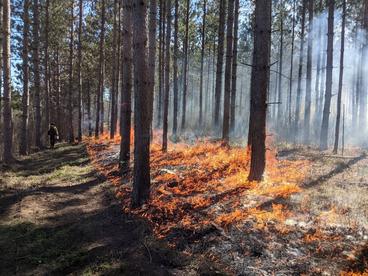
Mid-rotation site preparation and community wellness support through prescribed fire in the Otter Creek burn unit (FDL & UMN)
Promote and maintain fire-dependent forested community and conduct mid-rotation site preparation through ecocultural prescribed fire.
Cover type: Pine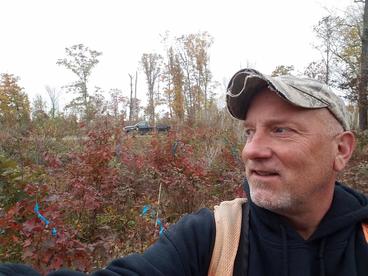
Brush Saw Release of Natural Oak Regeneration After Blowdown in Several Forest Types and Plant Communities (MN DNR)
Increase recruitment success of oak seedlings/saplings into larger size classes to ensure the species is a co-dominant/dominant species in the next mature stand.
Cover type: Other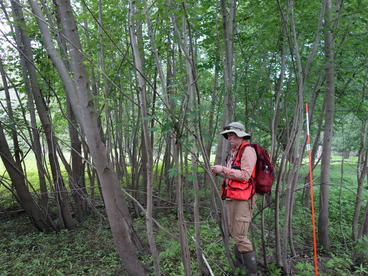
Results of 35 years of Lowland Hardwoods Regeneration Efforts on a Floodplain Forest Site in the Vermillion/Mississippi River Bottoms (MN DNR)
Regenerate mature lowland hardwood stands to young stands of similar composition.
Cover type: Other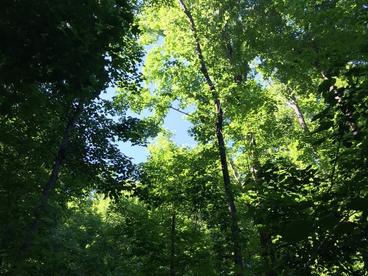
Long-term Effects of Timber Harvest and Blowdown Disturbances on Vegetation in a Southern Mesic Oak-Basswood Forest Plant Community (MN DNR)
1974 harvest: Release young poletimber to accelerate growth of desired species. 2009 harvest: Maintain and enhance a diverse, multi-aged northern hardwoods stand while salvaging blowdown timber.
Cover type: Northern hardwoods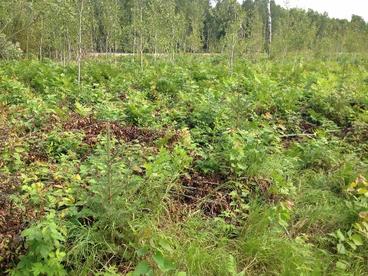
Enrichment planting of shade tolerant conifers in aspen coppice (UPM Blandin)
Introduce conifer species into a stand previously composed of almost pure aspen.
Cover type: Mixed Woods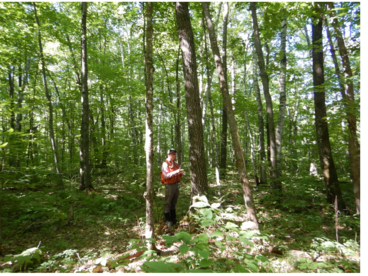
Red Oak Growth Response after Thinning in Five Native Plant Communities (MN DNR)
Cover type: Northern hardwoods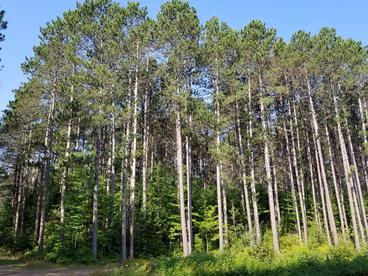
Danish Thinning Methods in Red Pine (UMN-CFC)
Demonstrate the results of thinning from below (light), selection (from the top), and thinning from above (heavy crown thinning).
Cover type: Pine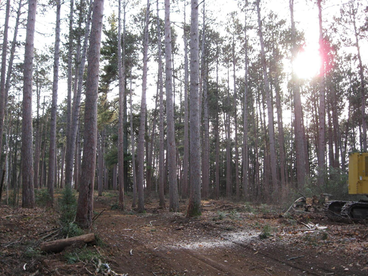
Structural Restoration of the Camp 8 Old-Growth Red Pine Stand (UMN-CFC)
This 1984 treatment was designed to demonstrate two types of reserve management: 1) mechanical restoration of open understory treatment, as a demonstration of historical stand structure maintained by surface fire regime, and 2) no treatment.
Cover type: Pine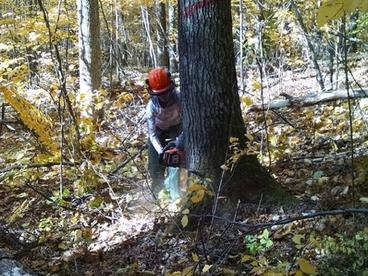
5 Year Oak Wilt Containment Study (WI DNR)
Stop the below-ground spread of an active oak wilt pocket in order to maintain oaks into the future.
Cover type: Northern hardwoods